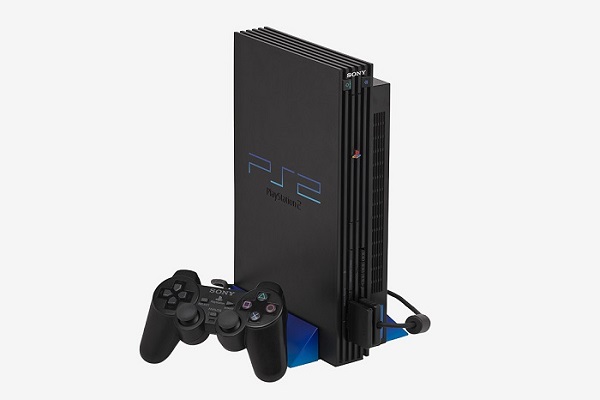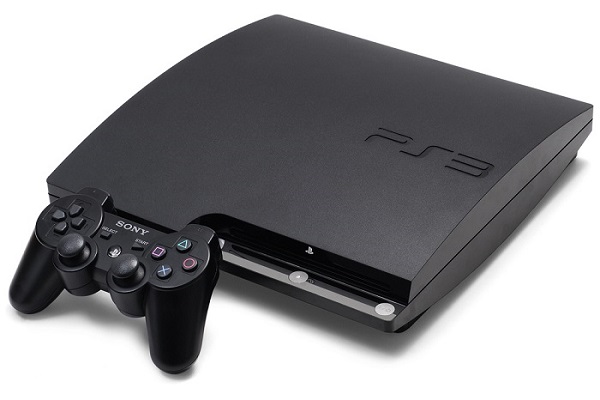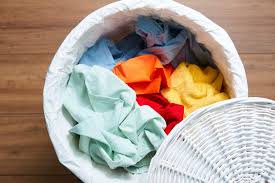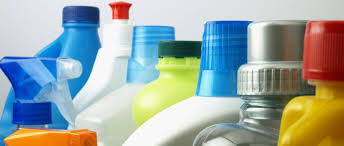
Basic Items for Glassblowing Beginners
Posted by Editor on Aug 26th, 2019 in Hobbies, Lifestyle | 0 commentsGlassblowing sounds like an exotic hobby, but you’ll be surprised to know that a lot of artists have become engrossed in this activity once they have tried it. It’s an expensive hobby, but it’s also a great idea to start a business once you have mastered the techniques and if you want a return of your investment.

While it’s not going to be easy getting all the items listed below, experts of this craft will tell you not to be cheap when it comes to buying equipment, because you’ll end up saving more money in the long run.
So, what items will you need to set up your own glassblowing studio at home?
Beginner’s Items
Some craft shops sell glassblowing starter kits that will let you save more money. Some of the kits will contain the basic items, but it will also depend on the materials you’re planning to work on. You will also need a studio for this because it’s a hazardous activity, so unless you have a vacant, well-ventilated space outside your home, this hobby may not be for you.

- Torch. Most experts will advise you to start with small torches that are affordable, but bigger torches can usually do more.
- Kiln. The size of the kiln will depend on the type of materials you want to work with and the kind of projects you have in mind. Try to find used kilns so you can save money, instead of buying brand-new kilns. Glassblowing generally uses three types of furnaces such as the furnace, glory hole, and the annealer.
- Propane, Oxygen, and Regulators. You can either start with an air propane torch or an oxygen propane torch depending on your budget and materials. The regulator on the other hand, is used to regulate the pressures in both the tank and delivery.
Other basic items used are the following: gas hose, ventilation hood, hose clamps, flashback arrestors, glasses, sparker or lighter, tube and rod, grabber or claw, blowpipe, marver, bench, punty, paddles, jacks, tweezers, shears, blocks, and newpaper pads. The basic sizes for tubing and rod are between 19 mm to 38 mm, but you should start with smaller sizes from 5 or 6 mm while you’re still practicing.

Glassblowing Techniques
To determine the types of tools you will need, you need to know about the different ways of working with glass; such as cold working, glass casting, fused glass, stained glass, lamp working, hot glass, and annealing. For each of these techniques, you will need specific items, so you have to decide which one you want to start with. There are different types of glass used as well, but the most common are the borosilicate or hard glass and the soda-lime or soft glass.
What You Need to Know About Skin Cancer
Posted by Editor on Aug 26th, 2019 in Health | 0 commentsMost types of skin cancer can be treated with early diagnosis and proper medication and procedures, but sometimes the symptoms are unnoticeable. Here are some of the things you need to know to determine if you have skin cancer.

Skin Cancer
This type of cancer begins in the cells found in the skin should not to be confused with cancer that begins in other parts of the body and affects the skin. Skin cancer can be classified into three types based on the parts of the skin that are affected by the cancer cells; such as, basal cell skin cancers, melanomas, and squamous cell skin cancers.
The most likely trigger of uncontrolled abnormal skin cell growth is the skin’s exposure to ultraviolet (UV) radiation from sunlight and even tanning beds. The UV rays damage the skin cells and trigger mutation or gene defects that will result in rapid multiplication of the cells that form tumors.
Basal Cell Carcinomas (BCC)

Considered the most common type of skin cancer in the world, it is caused by the damage to the basal cells found right below the skin surface. An individual with BCC will notice bumps on the skin the same color as the flesh on the arms, head, neck, legs, chest, and abdomen. If not treated, the cancer cells can possibly affect the surrounding tissues, nerves, and bones and may cause permanent disfigurement. BCC is further divided into other types of cancer, such as, nodular, superficial, morphoeic, and pigmented.
Melanomas
This type of skin cancer is caused by the damage to the melanocytes that produce the pigment in the skin. Doctors consider this the most serious form of skin cancer and will usually show up as moles or dark spots that often go unnoticed. If you have moles, you should inspect them daily and look out for the ABCs of melanoma.
These are asymmetry (half of the mole looks different), border (the mole is irregularly shaped), colors (the shades of the mole vary), diameter (most are bigger than 6 mm although a few are smaller), and evolving (the mole has a different appearance since you last checked it).

Squamous Cell Carcinomas (SCC)
The squamous cells develop on the keratinocytes, which are found on the surface of the skin (epidermis), the lining of the respiratory and digestive systems, and the lining of hollow organs. An individual with SCC will notice firm bumps, persistent sores or scaly patches on the face, neck and arms, which are often exposed to the sun. If not treated, it can affect the surrounding tissues, lymph nodes, and spread to other organs.
Other Types of Skin Cancer
The following types of skin cancer make up 1% of skin cancer cases in the world: T cell lymphoma of the skin, Merkel cell carcinoma, sebaceous gland cancer, Bowen’s disease (early non-melanoma skin cancer), and Kaposi’s sarcoma.
Early diagnosis is important, so look out for spots, sores, ulcers, lumps, and patches on the skin that have not healed for 4 weeks.
Tips for Caring for Your Gaming Consoles
Posted by Editor on Jul 11th, 2019 in Hobbies | 0 commentsCollecting retro and new consoles can be an expensive hobby to maintain but is also very rewarding if you want your children to continue your passion or if you decide to eventually sell them to another collector. While most consoles are durable and built to last for years of gaming, they can be susceptible to problems like all electronic gadgets.

Here are a few things to remember to always keep them in tip-top shape.
- Keep the boxes. Do not throw away the box your consoles came in because you can use them to transport your systems or store them safely. If you don’t like the sight of the boxes, store them in a cabinet along with the others.
- Keep the consoles clean. You do not need to take apart the consoles to clean them if you have no experience with electronics. The best thing to do to maintain cleanliness is to use a can of compressed air to spray into the vents. You could open the consoles to clean the hardware, but it will probably void your warranty, so do it only if it is necessary.
- Consoles should be placed in a cool area. You should never let it get too hot when you are using a console. You can purchase entertainment stands with open fronts and backs that will allow good air circulation. If you are planning to set up a gaming room, do it in an air-conditioned room because it can get warm during hot days in Singapore.

- Keep them dry. Do not place them in areas that generate cold or moisture as well. Moisture can short out the circuits and even cause electrical fire.
- Keep them away from sunlight and heat. Do not place your consoles in areas near windows or doors where sunlight can get through. Do not place them near other appliances as well because the heat they generate will break down the hardware faster. Keep the room cool, but not dry. Install thick curtains on windows to reduce the heat coming from the sunlight and install an air conditioner system and humidifier.

- Don’t place them in items that absorb heat. Cushions and carpets are bad for your electronics, so do not place any cloth or plastic under or near the consoles. Pick a table or stand that is made from wood, stone or metal.
- Be gentle when cleaning. Do not use water to clean your electronics. If you need to wipe the case, use an anti-static duster for easier cleaning. If you want to use a cleaning fluid made for electronics, do not spray it directly on the console. Instead, spray it on the rag to moisten it then wipe the rag on the console. Avoid touching the sensitive parts like the lens.
Organize the wiring. Knotted wires can cause problems. They are also more difficult to clean. To make your life easier, tie them up together with cable ties. If you want to store the wires, do not fold them up; instead, lay them out flat in a lidded container.
A Newbie’s Guide to Sony PlayStation
Posted by Editor on Jul 11th, 2019 in Gaming | 0 commentsThe PlayStation systems have always prided itself with its immersive and memorable games over the last two decades. It has remained strong when it comes to its lineup of exceptional titles, which is why it continues to dominate in sales.

If you are planning to buy a new PlayStation console soon, here are a few things to keep in mind.
PlayStation
This console was among the first to use CDs to play games and has a portable memory device. It can handle up to 24-bit color depth and its highest resolution is at 640 x 480. If you are going to buy the older models, there are different ports for video connections, including one model that could play VCDs so do read the descriptions on the label before purchasing. When buying controllers, the standard DualShock is the 700x series.
In addition, look for later models if you don’t want to have problems with the unit. Why should you buy a PS if there are new generation consoles? If you want to experience classic PS games, some play better with fewer problems on the PlayStation than on the PS2. You could purchase some PS classics digitally for the PS3 and PS4 but the selection is limited.
PlayStation 2

This console has over 4,000 titles and is the bestselling console of all time. With an extensive library, you’ll still find it easy to buy PS2 games these days. It is also known for its durability, but it is much cheaper now if you happen to come across one in the market. There are two types to choose from; the original or “fat” which has a 3.5-inch expansion bay for HDD and the slim PS2 with a built-in ethernet port and quieter fans.
If you want to buy a new controller, the standard is the DualShock 2, but you can also find arcade sticks if you want. Ideally, you should only purchase original products designed for the console. Additionally, you can attach as PS2 to HDMI adapter for newer TVs. The console also uses a memory card which ranges from 8 MB to 128 MB. You can play PS2 titles on the PS3 and PS4, but the selection is limited.
PlayStation 3

There are two versions of the PS3 like the PS2, but the main difference is only with the hard drive space. However, you can connect to an external hard drive, so this shouldn’t be a problem if you have plenty of digital games. It’s also compatible with Bluetooth headsets for online gaming as well as the PlayStation Eye which has a camera and microphone, and the PlayStation Move controller with motion-sensing features. To enjoy online features and find more games, you need to set up a PSN account.
PlayStation 4
Unlike the PS3, the PS4 uses an x86-based chip, but you can still play some PS3 games through a paid service. Another difference is in the controller which has a touchscreen, headphone jack, and the options and share buttons instead of start and select. When it comes to media, the PS3 might be easier to use than the PS4, which will need apps. But if you run out of space, you can easily format one external HDD for one PS4.
Four Dangerous Household Smells You Should Never Ignore
Posted by Editor on Jun 25th, 2019 in Home | 0 commentsYour nose is actually quite powerful, and scents play an important role in our daily lives. However, not all scents are good ones, and when you smell something out of the ordinary in your home, there’s probably something more going on that you need to address.
If you catch a whiff of any of these strange smells, be sure to keep the following in mind to know what that means:

Gas
Natural gases don’t usually have their own smell, but they are mixed with certain chemicals let you indicate its presence when it’s leaking. If you smell anything that smells like rotten eggs, especially in your kitchen, this means that your home is at risk of a fire hazard. While you can avoid this by routinely checking for leaks, you will need a professional plumber or home inspector to fix this issue with your home.
Musty smell
Pungent odors in your kitchen could indicate either a leaking sink or a broken pipe, which allows mold to grow and become a problem for those suffering from asthma or are prone to allergic reactions. If you have any non-porous surfaces at home, such as tiles, be sure to disinfect them regularly with a 10% bleach-water solution and ventilate the area well. However, for porous surfaces, you might be better off taking them down and replacing them since they could easily promote mold growth.

Smoke
Smoke always means that fire. Just like smelling gas, even the occasional whiff can be a big problem that could put your HDB flat or condo unit at risk of a huge fire hazard, and should automatically set off your fire alarm system if you have one. If you smell it when using a particular light, appliance, or light fixture, you need to turn it off and call an electrician to fix the problem right away.
Bathroom odors
You might have a drainage leak that contains toxic components if your home somehow smells like a waste treatment plant. These toxic components can be gases such as hydrogen sulfide and methane, which can cause problems such as eye irritation, unconsciousness, and even asphyxiation from the lack of oxygen.

Causes could either be leaking pipes or just an unused bathroom in general, and the latter can be solved by simply pouring a cup of water or two into the bathroom drain. However, if you can’t find the source of this problem, the issue could be with your plumbing and would need a professional plumber or home inspector.
If you’re worried that your home actually smells but no one seems to be telling you, you can clear your nose by going out for a few hours and then coming back to smell your house again.
Five Amazing Uses for Unscented Bleach in Your Home
Posted by Editor on Jun 25th, 2019 in Home | 0 commentsAside from cleaning your white laundry, there are more uses that you can get out of this household item that are reasons enough for you to always have it in handy.
Here’s how you can use bleach for your cleaning different items in your home:

1. Making a disinfectant spray
An easy way to kill germs is by using an all-purpose disinfectant, so when you’re looking to save money on this part of house cleaning, you can make your own by mixing a teaspoon of bleach to a gallon of water.
You can then fill an empty spray bottle with this and use it on whatever surface you need to clean. However, you should keep it away from ammonia to avoid producing toxic fumes.
2. Cleaning off all kinds of mold and mildew
Bleach and ammonia are great for getting rid of mold and mildew in your home, but because you shouldn’t use them together, you’re better off using only bleach.
One away to use bleach for cleaning off mold and mildew is to add a small part of it to hot water and apply it to the mildewed area, whether it’s washable fabric, unpainted cement, or even tile grouting.
Keep in mind that for other types of surfaces, you may need to let the water-bleach solution set for about fifteen minutes before rinsing off as needed.

3. Sterilizing secondhand items
When it comes to secondhand items, whether they are toys or kitchen utensils, you want to make sure that they are as clean as possible.
You can be safe from any harmful germs or bacteria by taking the waterproof items and soaking them in warm water along with a 3/4 cup of bleach and a few drops of antibacterial dishwashing liquid.
Let them soak for five minutes before rinsing well and air-drying under sunlight.
4. Make white porcelain shine
Your fine white china doesn’t have to go through expensive polishing when you can achieve the same effect with bleach.
To do this, prepare a well-ventilated are and a work surface lined with heavy plastic and place many paper towels over your item of choice, after which you should let them soak in undiluted bleach for at least fifteen minutes.
Once that’s done, rinse and wipe dry with a clean towel.

5. Cleaning cutting boards and countertops
Washing with water and soap alone won’t be enough for certain cutting boards and countertops. You need to use something else to get rid of any leftover bits of food or juices from meats that might have seeped in, and this is where bleach comes in.
The best way to do this is by scrubbing the surface of your cutting board or countertop with a toothbrush dipped in a water-bleach solution, with one teaspoon of bleach for every two liters of water.
